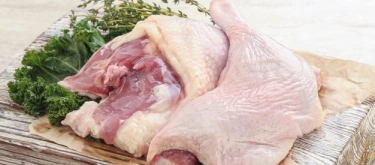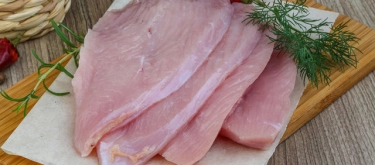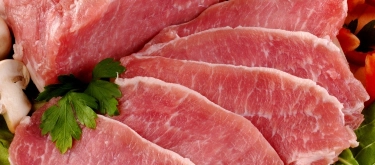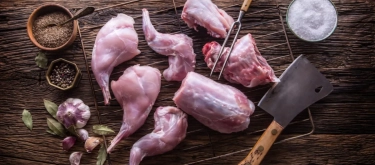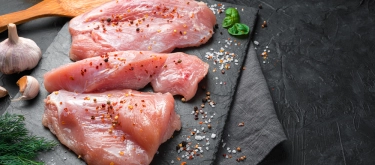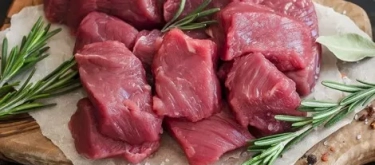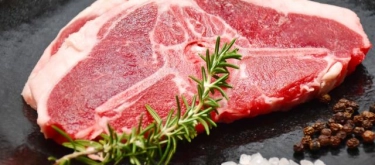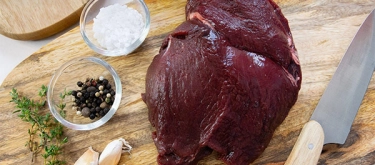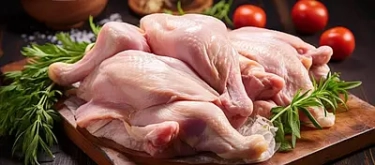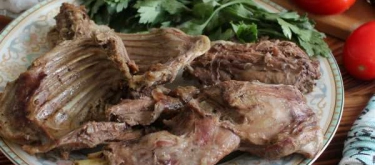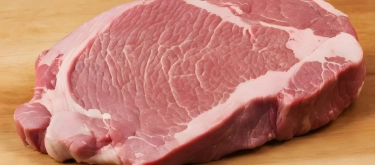Goose: Taste Profile, Aroma, Benefits and Health Risks
Goose meat, prized worldwide for its rich, succulent flavor and tender texture, has been cherished in culinary traditions for centuries. Historically significant in European, particularly Central and Eastern European cuisines, goose remains a centerpiece at festive tables and special occasions. Renowned dishes such as roast goose, goose confit, and smoked goose highlight its culinary versatility, luxurious flavor, and gastronomic appeal.
Goose is poultry meat and unsuitable for vegetarians or vegans. It is naturally gluten-free, though higher in fat compared to chicken or turkey. Individuals monitoring saturated fat or cholesterol intake should consume goose meat in moderation. Proper cooking ensures safety against foodborne pathogens.
What does Goose taste like?
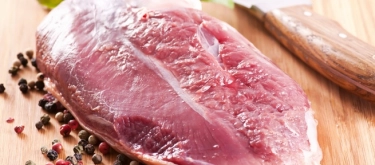
Complete Sensory Description
Taste:
Goose meat possesses a deeply rich, savory flavor with subtly sweet, slightly gamey undertones. Its taste is robust, fatty, and distinctly flavorful, richer and more complex compared to chicken, turkey, or even duck.
Aroma:
Fresh goose has a mild, slightly gamey aroma. Cooking goose yields intensely savory, rich fragrances, characterized by appetizing aromas of roasted poultry, caramelization, and subtle herbal or spice undertones.
Texture:
Goose is renowned for its tenderness, succulence, and juiciness due to higher fat content, especially under its crispy skin. Proper cooking creates melt-in-the-mouth textures, tender and moist with crisp exterior skin.
Appearance:
Fresh goose meat ranges from deep pink to reddish-brown, well-marbled with fat. Cooked goose develops golden, crispy skin, accompanied by tender, juicy, richly-colored meat, typically darker and more substantial than chicken or turkey.
Varieties and Culinary Uses
-
Whole Goose:
Traditional roasting centerpiece for festive meals (Christmas goose, holiday celebrations), achieving crispy skin and tender meat. -
Goose Breast:
Ideal for pan-searing, roasting, grilling, or smoking; tender texture with rich flavor profiles. -
Goose Legs & Thighs (Confit):
Perfect for slow cooking or classic French confit preparations, yielding luxurious, tender results. -
Smoked Goose:
Popular in European cuisines; used thinly sliced for appetizers, salads, or charcuterie platters.
In-depth Flavor Analysis
-
Rich Umami & Fatty Notes:
Goose’s notable fat content contributes deep umami flavors, creating satisfying richness and culinary depth. -
Subtle Sweetness & Gamey Undertones:
Gentle sweetness emerges during roasting, complemented by mildly gamey notes, offering complexity without overpowering. -
Crispy Skin & Tender Meat:
Proper roasting methods render goose fat, resulting in crisp, golden skin and succulent, flavorful meat beneath. -
Flavor Evolution:
Cooking significantly transforms goose, developing caramelized complexity, enhancing savory depth, and intensifying flavors, especially with slow roasting or smoking.
Culinary Applications
-
Roasting:
Traditional European method for festive goose dishes—often served with fruit sauces, red cabbage, apples, or chestnut stuffing. -
Goose Confit:
Slow-cooked goose legs preserved in fat, enjoyed for luxurious tenderness, especially in French cuisine. -
Smoking and Charcuterie:
Smoked goose breast is a delicacy sliced thinly for appetizers, charcuterie boards, or gourmet salads. -
Soups & Stews:
Goose bones and meat enrich hearty soups or stews, delivering deep, comforting flavor.
Selection and Storage
Selecting Quality Goose:
- Choose goose meat that is firm, moist, deep pinkish-red in color, with even fat distribution and fresh aroma.
- Avoid goose meat with grayish hues, dryness, or unpleasant odors, indicating spoilage or poor storage.
Storage Recommendations:
- Refrigerate fresh goose below 4°C (39°F), consuming within 2–3 days.
- Freeze goose in airtight packaging for longer storage; consume within 6–12 months for optimal flavor and quality.

Nutritional Insights
-
High-quality Protein:
Rich source of complete protein, essential for muscle growth, tissue repair, and overall nutritional health. -
High Fat Content:
Goose fat contains substantial monounsaturated and polyunsaturated fats, beneficial in moderation but high in calories and saturated fats, requiring mindful consumption. -
Vitamins & Minerals:
Goose provides notable amounts of vitamin B12, B6, niacin, selenium, zinc, phosphorus, and iron—nutrients critical for metabolism, immune function, and neurological health. -
Rich Source of Iron:
Goose contains higher levels of iron compared to other poultry, beneficial for healthy blood cells and preventing anemia.
Expert Insights & Culinary Tips
-
Optimal Roasting Techniques:
Culinary experts recommend roasting goose slowly at moderate temperatures to render fat effectively, crisp skin beautifully, and achieve tender, juicy results. -
Flavor Pairings:
Goose pairs exceptionally well with apples, plums, cranberries, red cabbage, chestnuts, citrus, sage, thyme, and rich sauces, enhancing its natural savory qualities. -
Fat Utilization:
Rendered goose fat is prized for cooking potatoes, roasting vegetables, or enhancing gourmet dishes due to its rich, flavorful qualities.
Interesting and Curious Facts
- Goose has historical culinary significance across European cultures, traditionally served at Christmas or special family celebrations, symbolizing abundance and prosperity.
- Goose fat, due to its high smoke point and flavor-enhancing properties, is highly valued in French, German, and Hungarian cuisines.
- The goose’s culinary prominence has inspired many traditional recipes across Europe, including roast goose in Germany, Austria, and the United Kingdom, and confit de canard d'oie (goose confit) in France.
How to Enjoy Goose
- Prepare roast goose served traditionally with apple, plum, or cranberry sauces for festive celebrations.
- Enjoy goose confit—slow-cooked, tender goose legs preserved in fat, served alongside potatoes or salads.
- Slice smoked goose breast thinly for gourmet appetizers, charcuterie boards, or elegant salads.
- Incorporate goose meat and bones into hearty soups, stews, or cassoulets for comforting, rich meals.
Harm and Dietary Considerations
-
High Fat & Calories:
Due to elevated fat content, goose should be consumed moderately, particularly among individuals managing cholesterol levels or heart-health considerations. -
Proper Cooking Essential:
Goose must be cooked thoroughly (internal temperature at least 74°C or 165°F) to prevent bacterial contamination and health risks. -
Allergic Considerations:
Though rare, some individuals may have allergies to poultry proteins, including goose.
Final Thoughts & Sensory Journey
Goose meat delivers a rich, deeply flavorful, and uniquely satisfying culinary experience, cherished particularly during festive occasions. Its succulent texture, crispy skin, and intense savoriness continue to enchant culinary enthusiasts worldwide, transforming traditional dishes into luxurious, memorable dining experiences.
Resources
- McGee, H. (2004). On Food and Cooking: The Science and Lore of the Kitchen. Scribner.
- USDA Food Safety and Inspection Service (2022). Goose Meat Nutritional Information & Safe Cooking Practices.
- Food and Agriculture Organization (FAO). (2021). Traditional European Poultry: Culinary and Nutritional Insights.
